How to Fix a Water Damaged Bathroom Floor
Water can creep into all the nooks and crannies of your bathroom floor even if you think you have...
Efflorescence is a common occurrence taking place in most hard surfaces that are constantly wet, damp or prone to water splashes. These include showers, pool areas, kitchen sinks, tank surroundings, basements, garden surrounds and more. What you notice and tend to ignore is a powdery white residue arising due to incompetent masonry. Let us read more to find out what exactly efflorescence is, its dangers, removal and prevention tips.
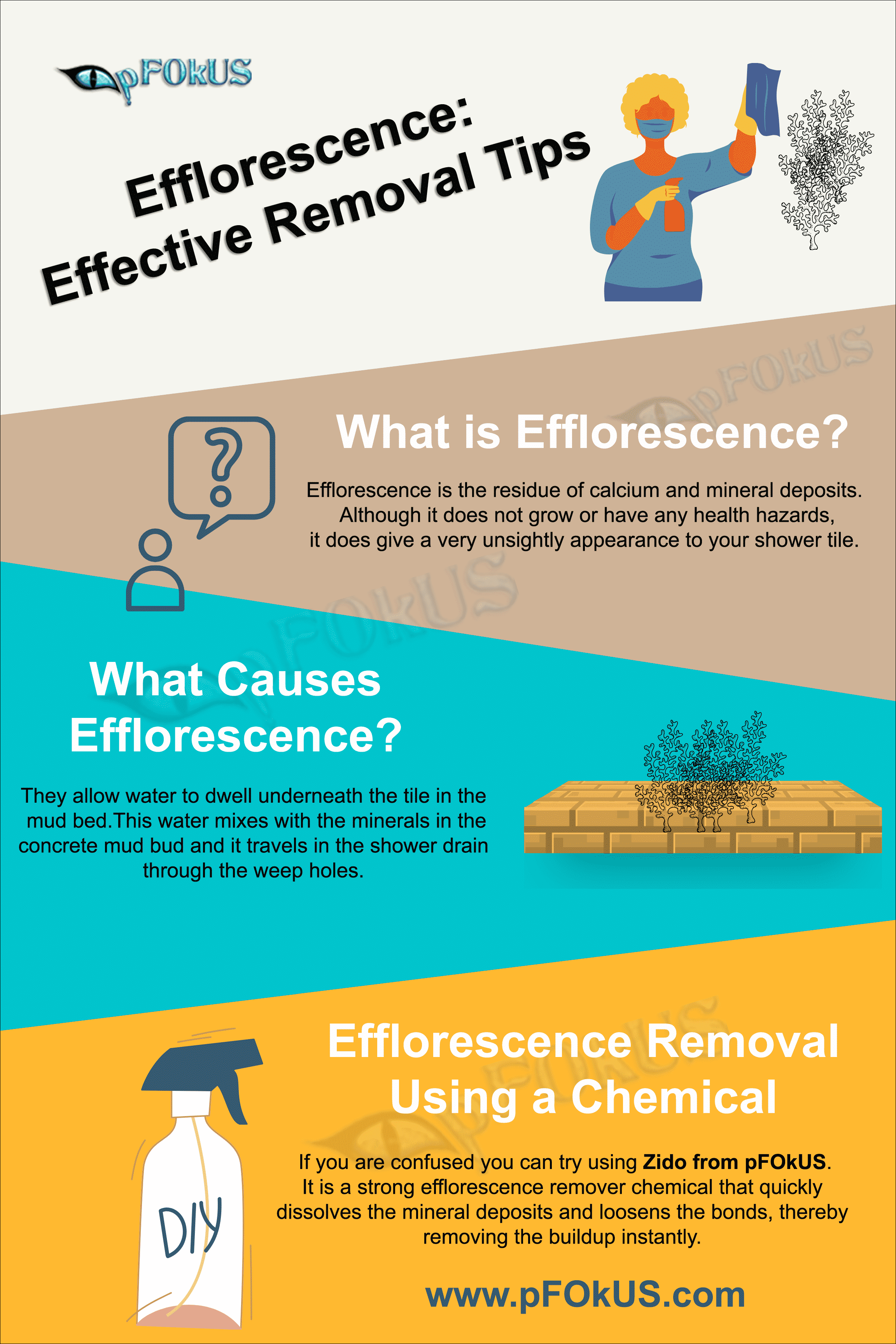
Sometimes, shower tile and grout gets covered with a thick-white powdery substance. This is not some cement mix that has been left over after masonry. This is, in fact, efflorescence, which originates due to masonry. It is very tough to make this deposit go away with a regular scrub or cleaning brush. Efflorescence is the residue of calcium and mineral deposits. Although it does not grow or have any health hazards, it does give a very unsightly appearance to your shower tile.
Sometimes, inefficient contractors or laymen do not install the tile properly. They allow water to dwell underneath the tile in the mud bed. This water mixes with the minerals in the concrete mud bud and it travels in the shower drain through the weep holes. This mixture then travels to the top of the flooring where water evaporates and the minerals settle down in the form of efflorescence.
Efflorescence in shower can also form if water is penetrating from somewhere into the concrete mud bed. This penetrating water mixes with the minerals and salts and forms a solution which travels to the top of the surface. Efflorescence forms only on those surfaces which are porous such as natural stone, wood or brick. These porous substances allow the penetration of water inside and outside too.
Although efflorescence does not pose any threat to the tile and grout, it does ruin the appearance of your flooring. It does not cause the deterioration of your building structure and nor is efflorescence harmful to health. But if not removed immediately, this efflorescence can crack the tile and grout. It can also clog the drains. The occurrence of efflorescence on tile proves that there is water or moisture underneath your tile and grout, which can cause mold and mildew breeding. When it clogs drains, it might lead to expensive drainage repairs too.
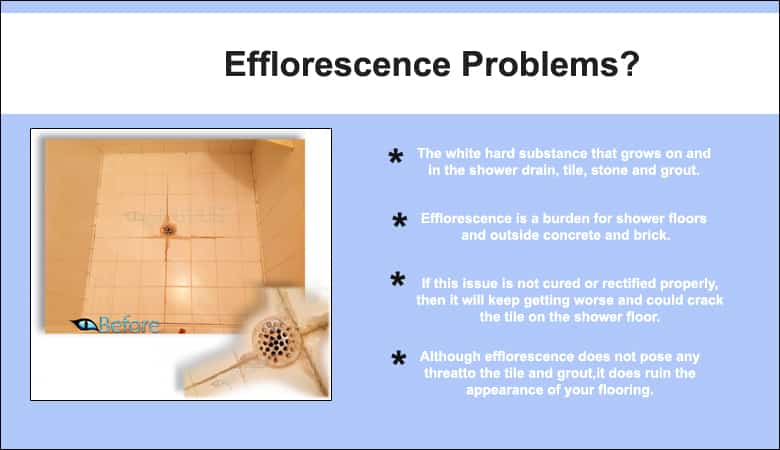
If you have a flooring that is completely damaged by efflorescence, then you need to follow a step-by-step procedure to restore it completely. Here are some effective efflorescence removal and prevention tips along with detailed steps to restore your flooring just like new.
Efflorescence should not be scrapped away with sharp tools, instead, it should be properly removed. Here are three steps you need to perform to remove efflorescence and further clean and repair the entire flooring.
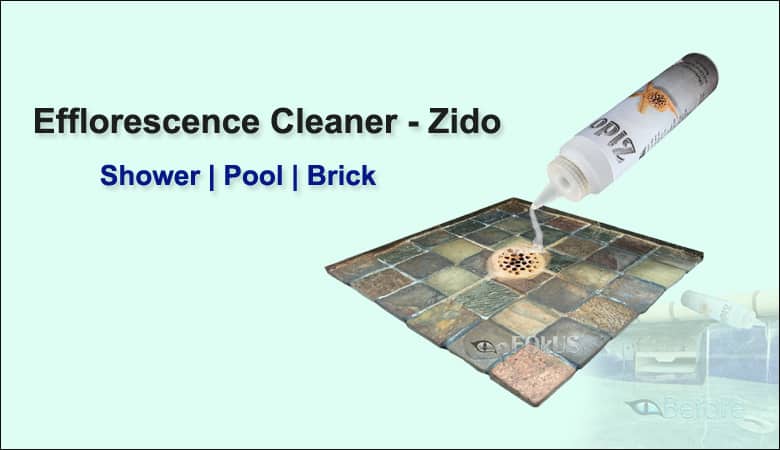
You can remove efflorescence on the tile and grout using a quality efflorescence remover chemical. Do not make the mistake of scrubbing it or removing it with a sharp tool that may leave scratches on the surface. Also, do not use acidic cleaners for efflorescence removal, as it may cause etching on the tile. A heavy-duty efflorescence removal chemical can attack the mineral deposits and loosen the bonds. Such a chemical can help to remove efflorescence from under the tile also.
Regardless of how well you clean the efflorescence, for a total flooring restoration, you also need to remove all kinds of stains and mold from the surface with the best stain and mold cleaner. After the bulk of efflorescence has been removed, you need to clean the entire tile and grout properly to remove stains, mold, grime, dirt and any left-over cement stains. These can be done by using a deep-penetrating tile grout cleaner that not only cleans the stains and mold from the top of the surface, but also penetrates deep within and removes all the hidden stains and mold from the root. Remember to use an alkaline cleaner, as acidic ones may cause etching on the tile.
After cleaning, you may notice some cracks, crevices or holes in the tile and grout. These may have occurred due to efflorescence, poor quality of grout, heavy impact of furniture or any such other issues. Sometimes, the efflorescence is not too heavy and your tile and grout may remain intact. But, when you are restoring your flooring completely, you need to first heal and seal these cracks before you proceed to any other steps. If you ignore these cracks, water will accumulate in these holes, again leading to mold or germ breeding. Today, you get premium-quality tile and grout adhesives. You can pigment these in a desired shade to perform seamless repair jobs. Get one such high-quality tile and grout adhesive to repair the cracks and gaps and get a uniform-looking flooring.
After the surface has been cleaned and repaired, you need to seal it with powerful sealers to prevent water absorption and subsequent efflorescence or mold occurrence. Here are two steps to sealing grout and tile.
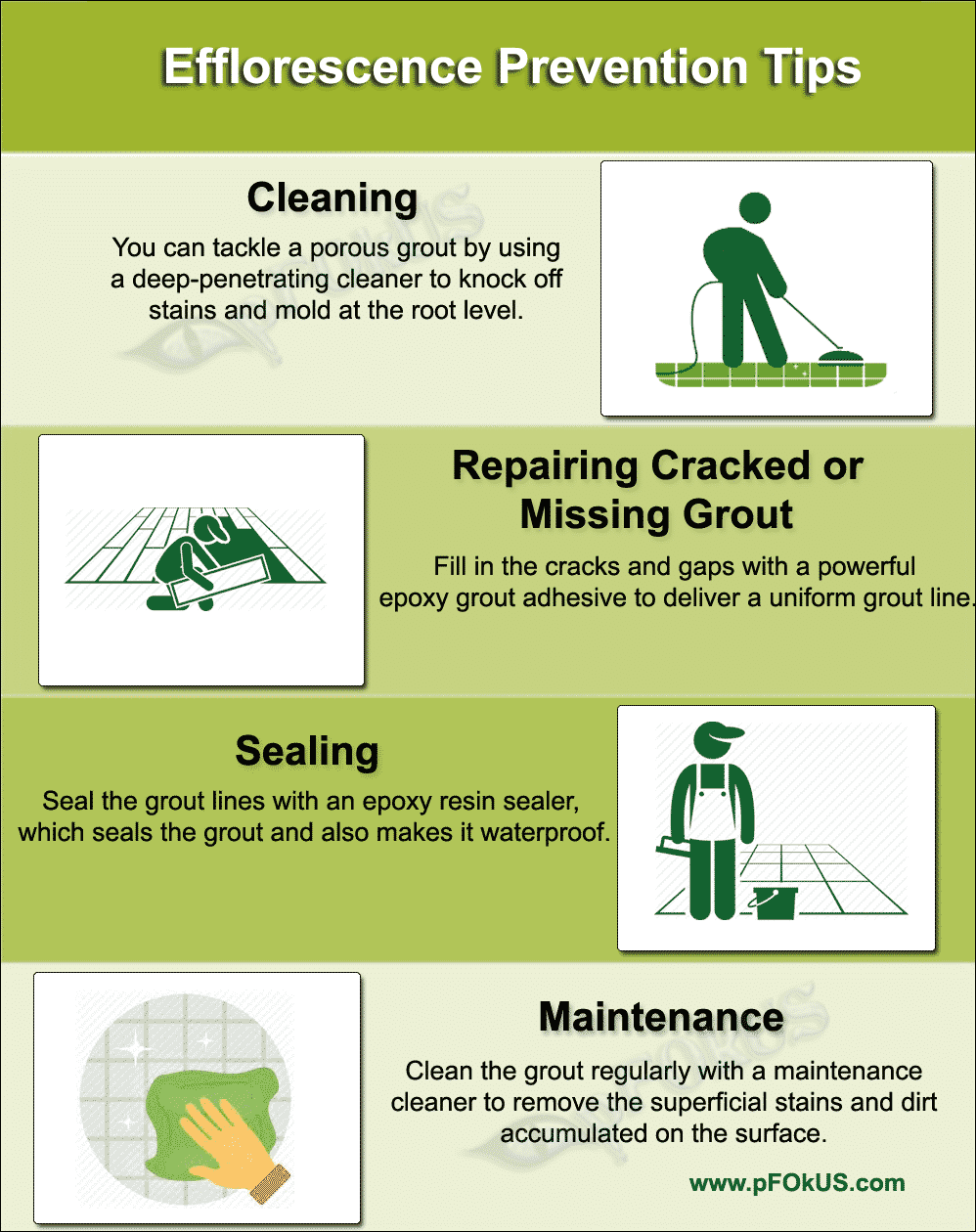
Once the grout is clean and repaired, if you want to prevent further efflorescence occurrence, you can try sealing with an epoxy/resin sealer. It is suggested not use a water-based sealer as it gets worn off quickly. You should not ignore grout sealing, as the moisture present in the grout can again lead to mold breeding that can spread on the entire tile surface. If you ignore sealing grout and proceed to tile sealing, then the mold occurring on the grout lines will give a hazy appearance underneath the tile sealant. If you do not seal grout, efflorescence may travel through the porous surface. This will result in efflorescence occurring under the top tile sealant coat. You should use a good-quality grout sealant that forms a waterproof barrier on the grout. This barrier protects it from water, moisture, mold, mildew, germs, cracks and chips for long.
Lastly, for complete floor restoration after removing efflorescence, you should seal the tile as well. Sealing prevents water absorption and hence, no water seeps into the porous tile and grout. This works both ways, as it prevents entry of water mixed with minerals to travel from underneath the tile to the top, as well as preventing water on the top of the flooring to get absorbed within the porous tile and grout and cause mold and mildew.
Sealing with a good topical resin sealer ensures that you have formed a waterproof layer on the surface. It also ensures that you have preserved the integrity and beauty of your tile and grout for long. If you have sealed your tile properly, then even if there is moisture underneath the tile, it will travel in the form of efflorescence and settle on the tile and grout. Also, as there is no deep-rooted moisture, mold and mildew will also not occur.
These are the complete steps you need to perform if you want to remove efflorescence. These steps will guide you also to restore your flooring to its original beauty. There are many efflorescence removers available on the market, but not all the products give quality results.
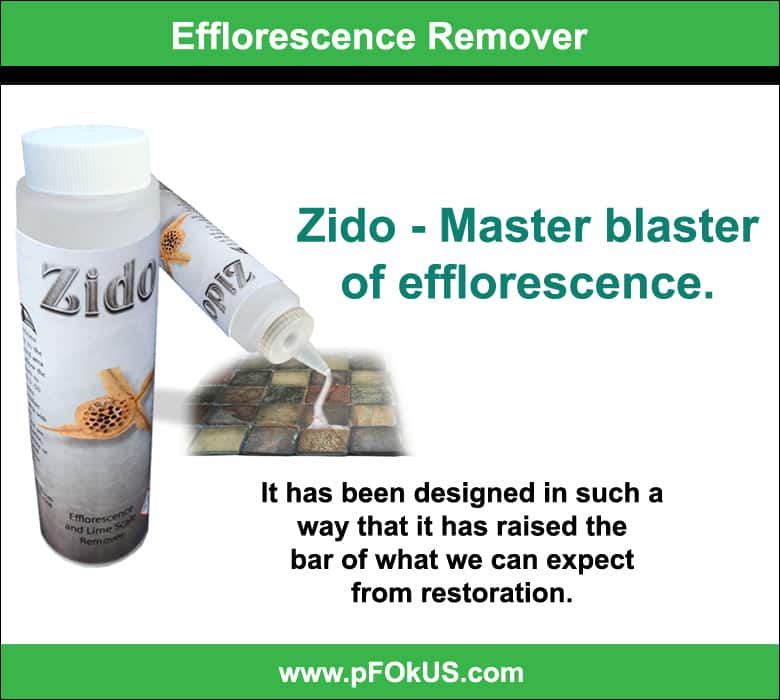
If you are confused you can try using Zido from pFOkUS. It is a strong efflorescence remover chemical that quickly dissolves the mineral deposits. It loosens the bonds, thereby removing the buildup instantly. Zido does not cause any damage to the tile and grout.
All the above mentioned steps are for a DIY procedure. If you have the time, you can indulge in this procedure yourself, else, you can hire an expert efflorescence removal service as well.